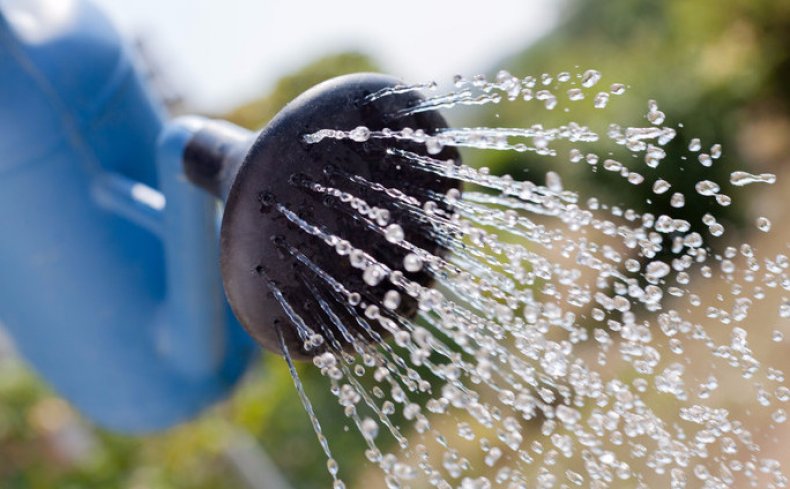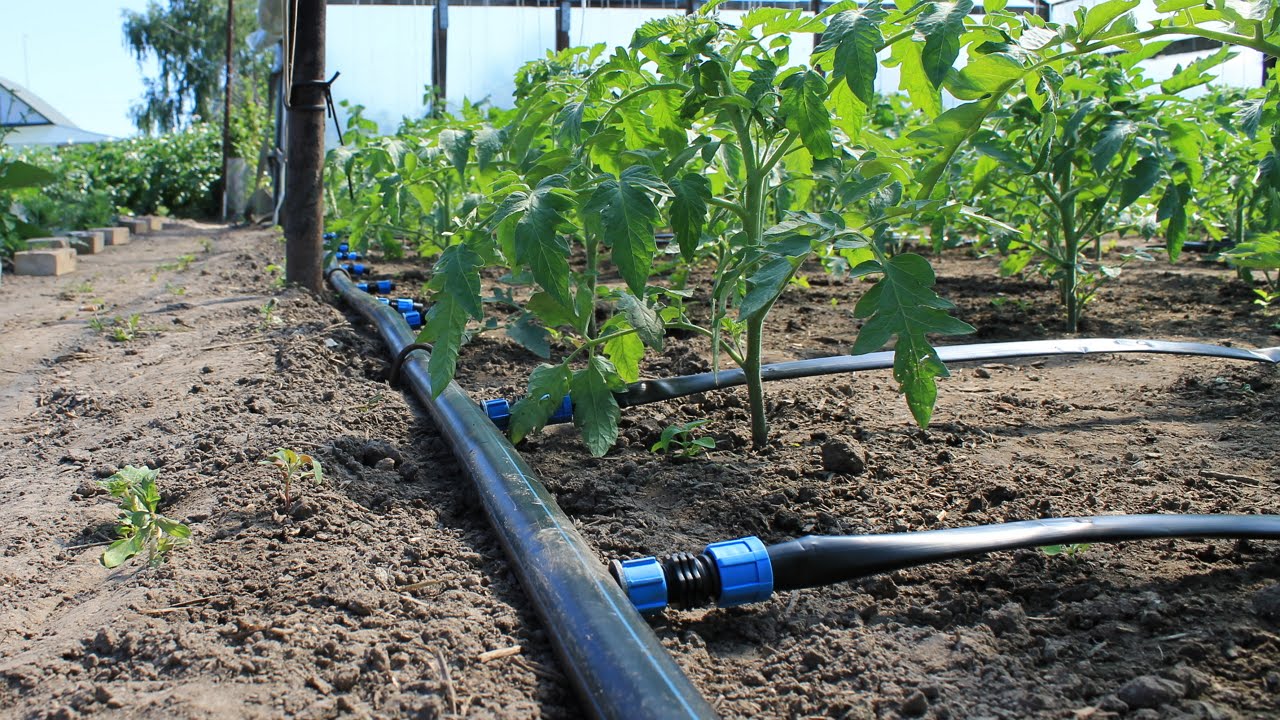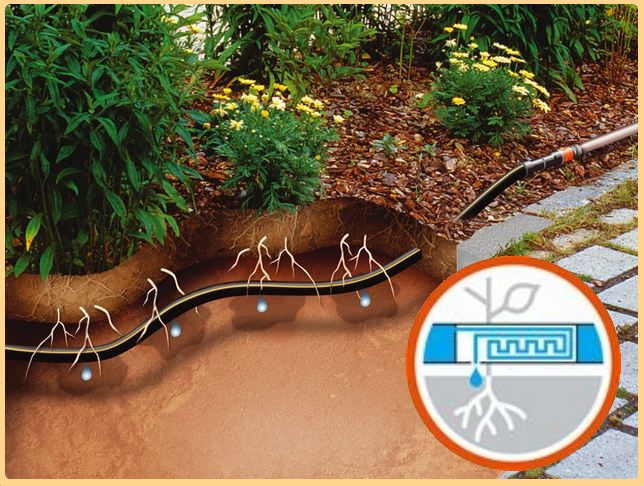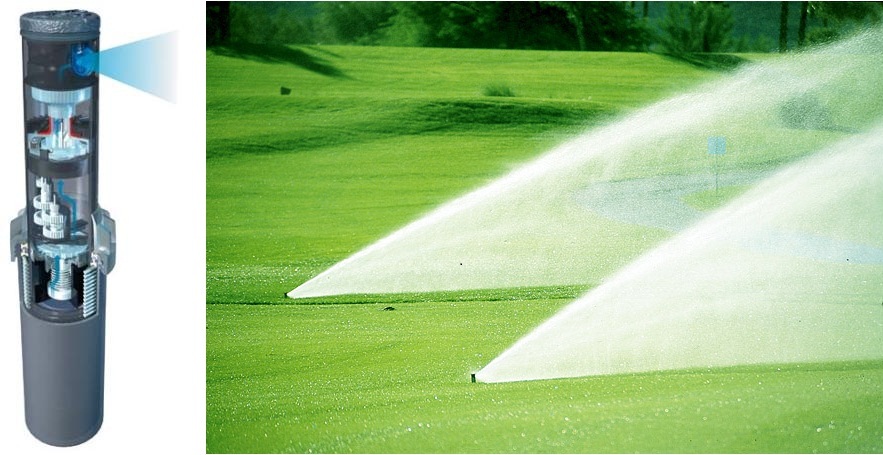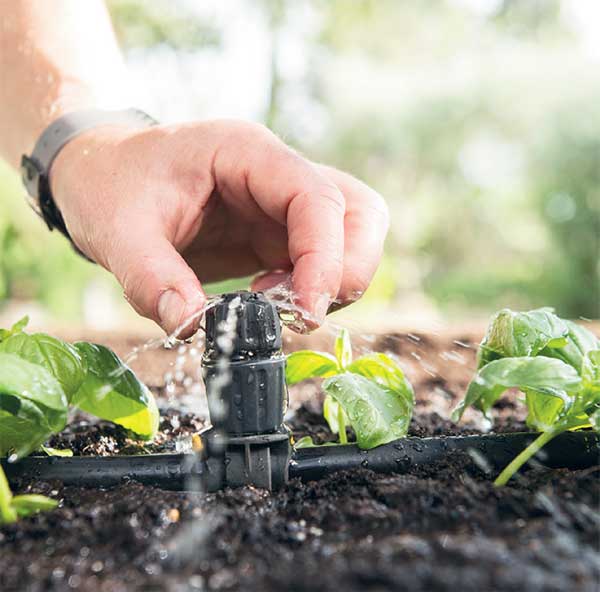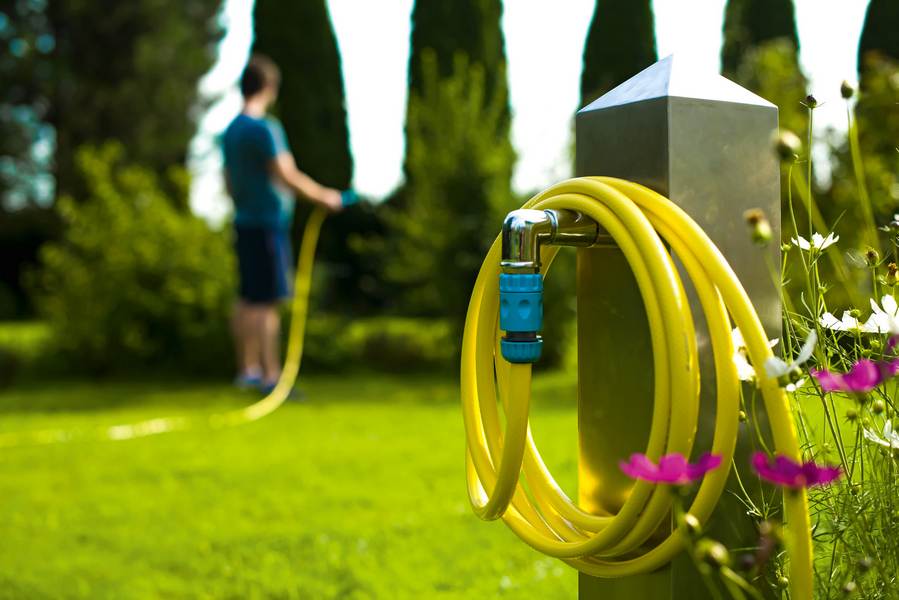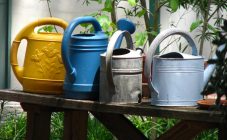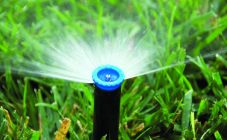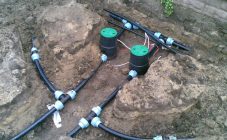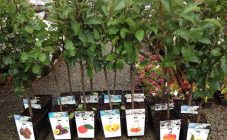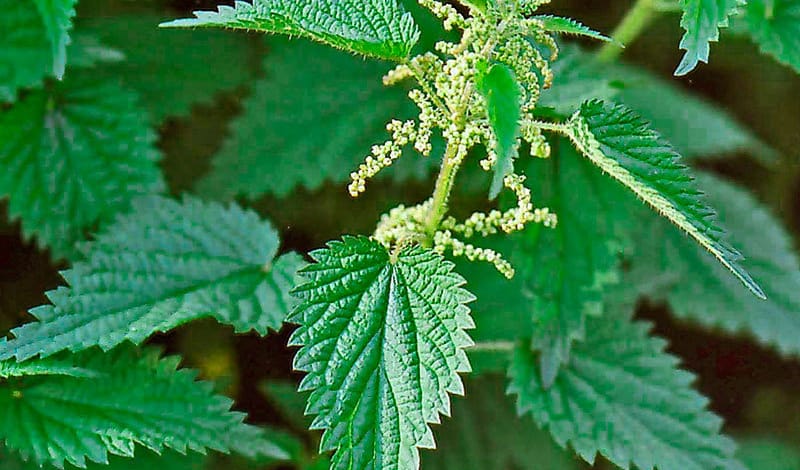Content:
To make life easier for summer residents and gardeners, experienced engineers and folk inventors have developed various irrigation systems for irrigating the soil. They are adapted to different size areas. Plants can be watered using both a watering can and automatic irrigation systems for moistening vegetable and garden areas, greenhouse beds and house lawns.
Varieties of installations
Natural is the desire of summer residents to reduce the labor intensity of work and work automation. The market offers various irrigation systems in the form of hoses, sprinklers and sprinklers. It is important to choose a suitable device, since all these installations have both pros and cons for irrigation.
Modern irrigation sprinklers consist of 3 types:
- Subsoil irrigation system. Provide water supply directly to plant rhizomes. They are used for fruit and berry plantations and vineyards;
- Drip irrigation. Differs in economy. Promotes uniform and constant distribution of moisture in small proportions to the root system of plants. Thanks to this approach, additional loosening of the soil is not required. The irrigation system is good in the country, for vegetable gardens and orchards. The disadvantage is the clogging of drip installations, which require constant cleaning;
- Rain irrigation system. It involves the installation of special sprinklers that irrigate the plantings. In complex designs, the sprinklers rotate to distribute the water evenly. Used on flower beds and lawns. Summer residents rarely use it, since the system distributes watering not only between the beds, but also along the paths.
Description of watering methods
There are two types of water supply for summer cottage irrigation:
- Automatic design. Operates by executing a program specified by the owner. Watering of the territory is carried out at the time specified by the gardener or according to the installed humidification sensors;
- Mechanical device. Watering is controlled by a person. To supply water to the system, the supply is carried out in manual mode.
It will be much easier for the summer resident if he acquires a ready-made structure, but in order to save money, you can organize a structure for watering on the plantation with your own hands.
To invent your own watering system in the garden, you need to make maximum efforts, but, over time, you will have free time for other activities in the beds. When designing automatic irrigation, it is possible to irrigate the beds without human intervention, which greatly facilitates gardening.
Installation of automatic structures
The organization of autowatering is possible when arranging a pumping unit or a station that supplies water from a reservoir or well.A simple irrigation system consists of a timer device using a special socket to which the pump is connected. This device is great for both daily irrigation and a timer-set interval.
The use of automatic irrigation is also important for sprinkling. It can be used for any home-assembled system.
Drip water collection
It is permissible to design drip irrigation using different methods. The supply of moisture for plants is handled by both a plumbing device and a reservoir installed at a summer cottage. The drip irrigation system for the garden must necessarily contain a filter so that there is no clogging of the drip holes.
The use of the reservoir will result in round-the-clock watering, which will continue until it runs out of water. The main thing is to determine the pressure mode. If you use a central water supply for irrigation, you will have to adjust to the time interval for starting the water. Plants will be watered only at certain times.
There are several ways to transport water to plantings in the garden, depending on the characteristics of the pipes:
- Through a specialized drip tape. In this case, a plastic pipe is installed between the beds, through which water will be supplied to the plants. If there are several rows, a branching distributor is mounted, which is installed at the very beginning of the row. For convenience, the tape is spirally laid around the wooden trunk. It is laid along the central radius of the hole, connected to the edges;
- Through a rigid hose with holes. Watering and installation of the system is carried out in the same way as in option 1;
- Through small plastic systems. Used on homesteads that have stationary beds. The pipes are pierced with a hot awl to create small holes. Then they are mounted between the beds with plants and brought to the water supply.
The drip system is an inexpensive type of irrigation, especially if the installation is done with your own hands. After installing the pipeline, a test run of water is carried out and its supply is regulated.
Underground structure
The method is well suited for areas where water supply interruptions are observed. It is considered economical, since the water consumption when irrigating the soil is reduced by up to two times, compared with surface irrigation of plants. Used for fruit and berry areas.
Installation of underground irrigation is carried out during the planting period using crushed stone and a piece of plastic sewer pipe. Provides for the following stages:
- A pit is dug for planting, it should have a depth and width of 30 cm more than the expected parameters;
- The bottom is covered with rubble, the layer thickness is 20 cm;
- In order to avoid slopes when watering, it is important that a distance of about 20 cm remains above the soil;
- On top of the crushed stone, soil up to 10 cm is poured;
- The plant is planted in the usual way;
- A plug is fixed to the edge of the pipe so that the hole is not clogged.
The water flows to the root system of the plants through a hose through a pipe. Therefore, there is no need to moisten the plantings from above. Watering rates are regulated by the type of climate. The automatic water supply should be installed only if it is necessary to water large plantings.
Specialized devices
To ensure high-quality watering, it is better to stock up on a quality device for moistening the beds. There are many proven units that have been successfully used in agriculture, farming and horticulture.
Automation with Hunter
If the maintenance has a large lawn, a huge vineyard, a vegetable garden and a garden, then the American Hunter system is well suited for irrigation.
This design is fully automated, equipped with humidity sensors and a timer to make it easier to regulate irrigation.
All components of this device, including containers, divisors and solenoid valves, are made of polypropylene material with an impact-resistant coating. The design tolerates changes in temperature conditions well. The performance of the Hunter system is designed for 20 years. The price of such a device varies, depending on the area of the irrigated area. For example, 1 hundred square meters of irrigation will require a system that will cost about $ 700. On 11 hectare of the garden will have to spend 1,500 thousand dollars. The larger the area, the cheaper the cost of the irrigation system.
The big advantage of the device is the provision of its own autonomy. If the summer resident fails to frequently visit the garden, then the structure will automatically water when it is necessary for the vegetation. In addition, you can independently set the irrigation time.
Drip irrigation with Hozelock
It is also possible to mount the Hozelock circular drip irrigation system with your own hands. Based on the feedback from amateur gardeners, it is worth considering that the design saves water consumption, is ergonomic, and easy to use. It is produced in two versions. One is used for watering open areas or greenhouses, the other for potted vegetation.
Hozelock provides drip irrigation for hedges, orchards including shrubs, vegetable gardens, flower beds and greenhouses. One device is designed for irrigation of an area of 10 square meters, equipped with a pressure reducer and a 15-meter hose. The set includes 10 drippers, 5 clamping elements, 2 plugs, a sleeve for connecting to a tee. The system has a modular structure. If necessary, it can be easily expanded by purchasing a separate hose, dropper and connection elements. It can be easily modeled with parts from other systems.
Advantages of the Garden system
Some summer residents stop at choosing the Garden system. Those who decide to purchase such equipment should first think about the result.
When choosing a Garden irrigation system, it is worth considering the following features:
- territorial dimensions;
- landscape device;
- watering methods.
To install the device, you must:
- have a permanent water source;
- storage tank;
- irrigation hoses.
When choosing this part, it is worth considering how far the hose will be from the water supply and what the area to be watered will be. If the irrigation area is large, then it is better to install a station for pumping water and pressure stability.
Irrigation hoses can have the following directions:
- economical in terms of water consumption;
- equipped with a microporous structure for drip irrigation;
- hoses made for micro-drip irrigation.
In some cases, it is possible to install the Gardenon multifunctional irrigation system, which is used not only for irrigation, but also for supplying water to utility rooms, toilets and showers, outbuildings, and livestock buildings.
When making a choice, it is important to pay attention to the technical characteristics:
- protective and reinforcing structures;
- the size of the allowable pressure on the hose;
- section standard.
Using the irrigation system requires constant maintenance of the hoses. If the hose has a transparent structure, then you need to protect it from ultraviolet radiation in order to avoid the development of microorganisms on it. Storage of equipment is carried out only in a clean and dry room.The hose is pre-wound on a special device.
Pros and cons of automatic watering
Before installing automatic irrigation on your own plot, it is worth considering all the pros and cons of this system. The following characteristics are considered to be pluses:
- automatic determination of watering time and intervals between them;
- obtaining the required amount of moisture by the roots of plants;
- preventing the soil from drying out;
- uniform moistening of soil reliefs;
- economical water consumption by the system;
- timely fertilization of the roots.
The disadvantages of the system are:
- high costs for the arrangement of the structure;
- lack of program modes for watering certain types of crops;
- additional installation of a reservoir for distribution of liquid in the absence of central water supply;
- the need to draw up a clear diagram of the garden area for accurate watering of plants.
DIY irrigation system invention
Before creating an irrigation system yourself, you must stock up on the necessary equipment and draw up instructions for use. Drawing it up is essential to collecting the right amount of parts.
Pipes are usually chosen from plastic, since this material has practicality and durability compared to metal. If water is not supplied at the summer cottage, then a tank for storing liquid should be installed. It must be above ground level. Hose installation will depend on the irrigation method. They can be buried in the ground or placed on top of the lawn.
The creation of an irrigation system is divided into the following stages:
- A funnel is mounted from plastic canisters or other equipment;
- The storage tank is secured to a wooden mount. It must be suspended at an angle;
- The irrigation pipe is connected to the funnel, which is attached to the bar;
- The end is secured with a counterweight.
Operating principle:
- liquid from the reservoir is distributed to the storage tank;
- under the weight of the water, the accumulator drops to the funnel and releases water into the pipe;
- when the drive is empty, it returns to its original position.
The water supply can be regulated using a specially installed valve.
When purchasing a station, you can fully automate watering. The hose is equipped with holes for watering the plants while the drain sprinkler pump is running.
It should be borne in mind that a self-made watering system will be much cheaper than a ready-made watering structure. Each gardener makes a choice based on the amount of funds at his disposal.
h
